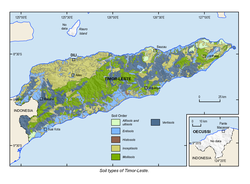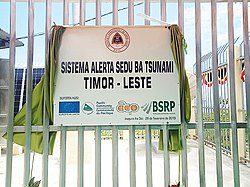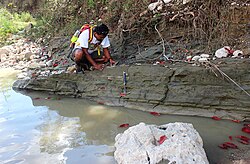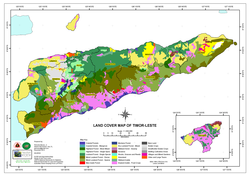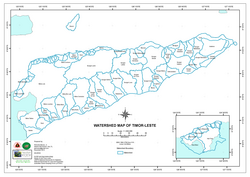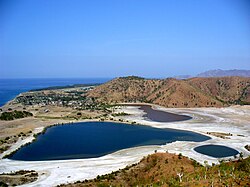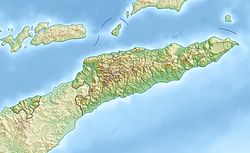Timor-Leste Geological map of zone C
The occurrence of chromite, the chromium ore, within Timor-Leste has been confirmed to be present at Manatuto Municipality hosted within the Aileu Formation, particularly within the peridotite (ranging from lherzolite, harzburgite, and dunite) and their serpentinite equivalent at varying degrees of serpentinization (Lay et al. 2017). The chromite is associated with minute traces of platinum-group elements (PGEs). Additionally, traces of copper and nickel mineralisation was also identified in the area to be associated with this chromite (Lay et al. 2017). Apart from the Illimanu area, Turiscai area of Manufahi Municipality was also identified as one of the area in which there is an indication of precious and base metals based on the previous studies (AMC 1937; UN-ESCAP 2003). The gold reported to occur within quartz vein or as gold nuggets found to be associated with gravel in sections of the Sue, South Laclo and Cler Rivers, suggesting a placer gold deposit occurring within the Manufahi Municipality (AMC 1937; UN-ESCAP 2003). Aside from gold mineralisation mentioned, disseminated copper- gold and copper mineralisation also found in ophiolite sequence similar to copper mineralisation in other part of the country, particularly those identify in Baucau and Viqueque Municipalities (UN-ESCAP 2003).
This zone is also noted for its kaolin deposit and identified as the largest indicated resource for kaolin within the country, within the municipality of Aileu (UN-ESCAP 2003; IPG 2017). Other non-metallic mineral such as phosphate also occur within Zone C, particularly within the Manatuto Municipality hosted by the Bobonaro Scaly Clay. Currently there are two existing concession areas located in Manatuto Municipality within Zone C.Relevante Bilder
Relevante Artikel
Geographie OsttimorsDie Geographie Osttimors wird durch seine Lage im Übergang von Asien zu Australien geprägt. Osttimor ist das einzige Land Asiens, dessen Staatsgebiet komplett südlich des Äquators liegt. Das Territorium umfasst nicht nur die östliche Hälfte Timors, sondern auch die Exklave Oe-Cusse Ambeno, welche an der Nordküste des indonesischen Teils der Insel gelegen ist, sowie die beiden kleinen Inseln Atauro und Jaco. .. weiterlesen










